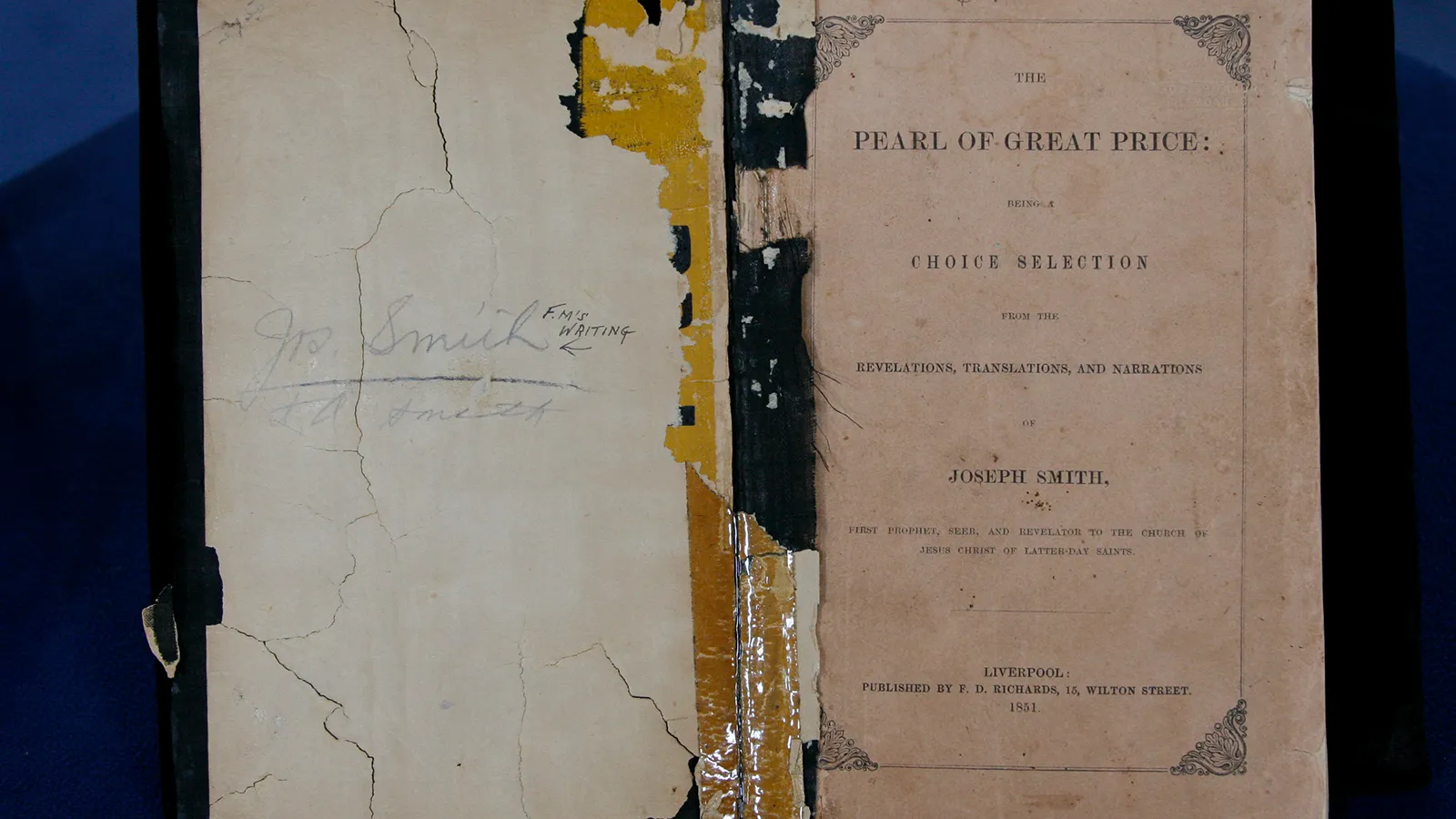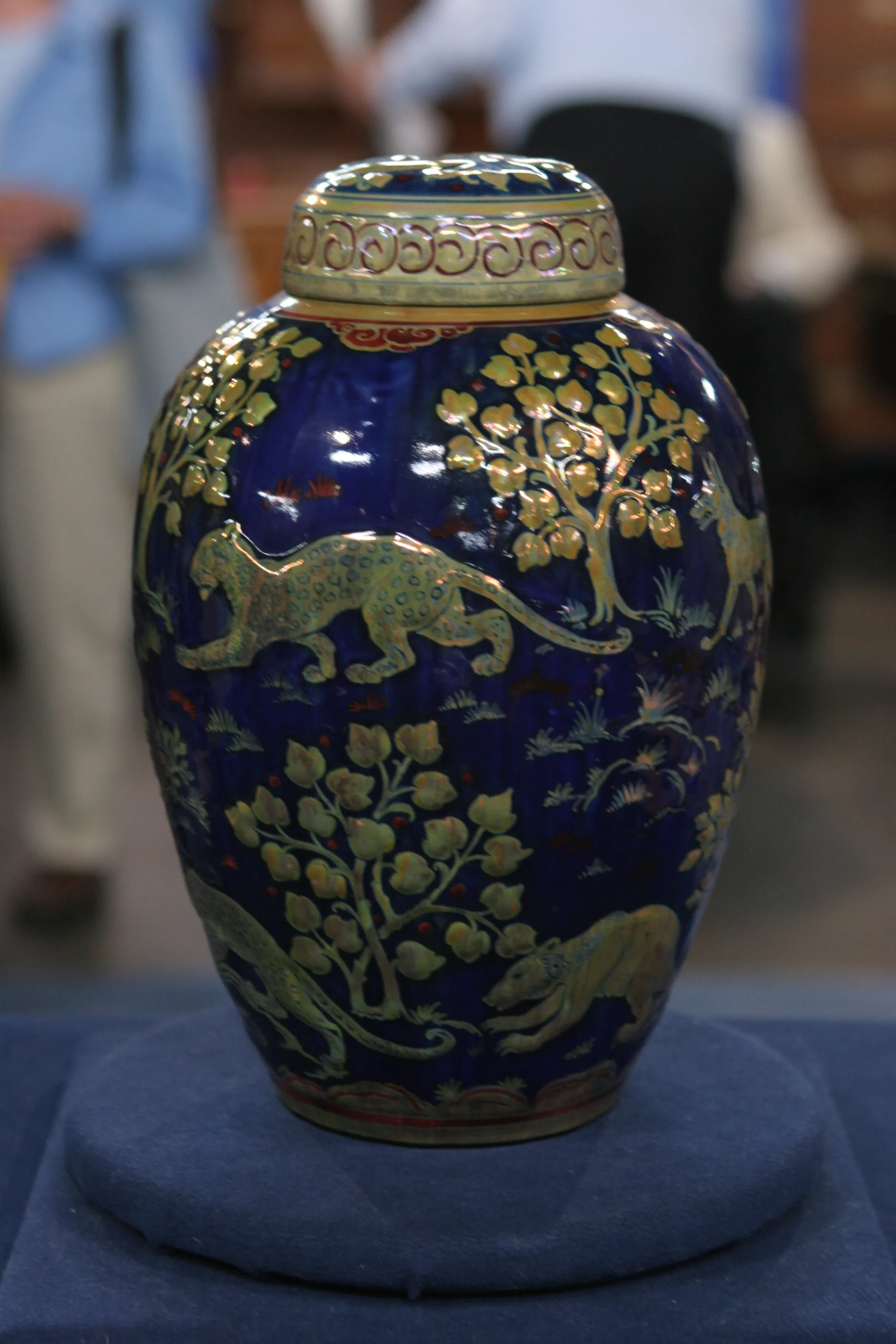GUEST: This is my great-grandfather Phil Margetts. He was born in England, and he came to Salt Lake City in 1850. He mostly made a living as a blacksmith and also as an owner of a... a wine depot. But his real passion was acting. And he was, in fact, the best-known and best-loved actor in the Utah Territory from about 1850 to his retirement in 1905.
APPRAISER: In fact, he was really considered the first main Mormon actor. It's an exceptional archive, and we've only selected a few pieces. The first item is his certificate of citizenship. As you mentioned, he came to the United States in the 1850s. And here is his certificate from 1857, making him a citizen of the Utah Territory. Here's a great period photograph of Salt Lake City. And as you mentioned, he was a wine merchant. And here is his establishment. Here he is with Brigham Young's nephew, S.B. Young. Here he is performing...
GUEST: In character.
APPRAISER: In character. Do you know which character he is in that?
GUEST: Yes, he's playing Mr. Toodles there.
APPRAISER: Mr. Toodles, it's great. Here's a small portrait of him. We also see a ticket to a performance here in Salt Lake City. One of the most significant aspects of the archive are these three letters, all of which were written to your great-grandfather by Brigham Young, who, at this time, was well established here in Salt Lake City. The content of the letters shows that he was a great supporter of your, your great-grandfather, and in fact, helped him develop the theater here.
GUEST: Yes.
APPRAISER: And the details that are given about monies that were going to be used to develop the theater really create a sense of history. This letter, which he has written to his wife, shows an amazing period in history, right when the United States Army was believed to be moving into Salt Lake City. And what does he say?
GUEST: Well, uh, he thinks it's all a bunch of nonsense.
APPRAISER (laughs)
GUEST: Uh, he's just headed back East. One of the first rumors that he heard was that the Army was coming out, and he thought it was all humbug.
APPRAISER: And of course, it did come, it did come to pass.
GUEST: Yes, they did come.
APPRAISER: And that's just some of the great content that we have. What we also have are printed playbills. We have his diary. We also have his own handwritten scripts, which he recorded. Obviously, it was difficult to get things printed.
GUEST: Yes.
APPRAISER: And sometimes one had to write one's own scripts.
GUEST: Yeah.
APPRAISER: There's an immense amount of interest in all material relating to the Church of Latter-Day Saints. This is so rich and so detailed. This is only just a fraction of, of what you have. We estimate the collection-- and not just what we're showing here on screen, but everything that you brought with you today-- with a fair-market value of $100,000 to $150,000.
GUEST (laughing): Are you kidding me?
APPRAISER: Not at all, no.
GUEST: Oh, my God.
APPRAISER: We think that the... The interest is absolutely phenomenal, and, uh, as a, as a window into history, containing the three letters from Brigham Young-- not only those, but all of his own diaries from the period from Salt Lake City-- it's a remarkable archive. Thank you for bringing it in, it's a thrill.
GUEST (laughing): Thank you. Did you say $100,000 to $150,000? My gosh. Ah, thank you. (laughs)










